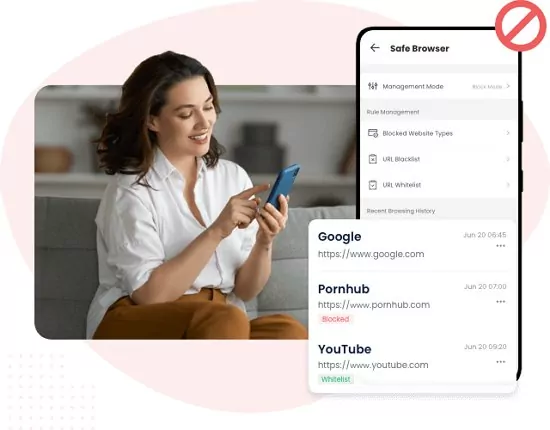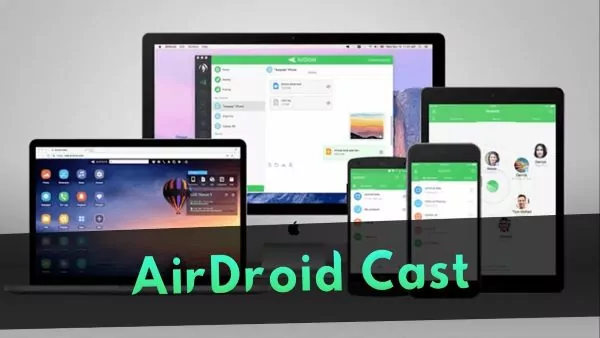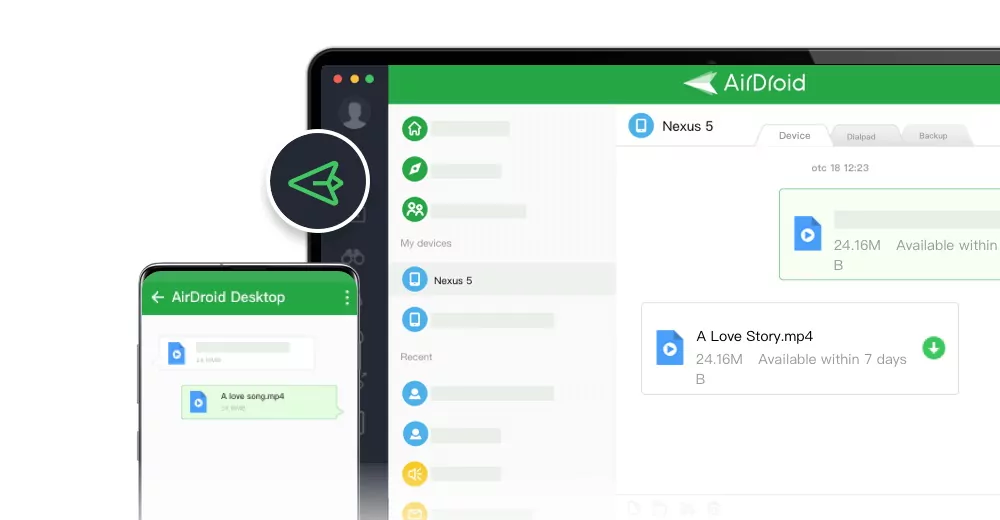How to Access Blocked Internet Sites [15 Effective Methods]
You often see certain websites blocked due to geographical restrictions or government regulations. If you assume that you won't be able to access these websites again, that's not true. There are ways to bypass these restrictions.
In this article, we will describe how to access blocked websites and maintain your online freedom regardless of your location. But before we jump in, it's important to remember that some websites are blocked for a reason, and it's best to leave them alone.
How to Unblock Websites?
Authorities often block specific websites in certain locations or networks, such as schools or workplaces. However, several methods can bypass these restrictions and allow access to the information you seek. In this guide, we will cover 15 effective solutions for unblocking websites.
1. Use a VPN
VPN is one of the most effective ways to unblock websites and protect your online privacy. It works by routing your internet traffic through a distinct and secure server and encrypting your data before sending it to another IP address. That's how you can bypass restrictions and access blocked websites from anywhere in the world.
1. Choose a reputable VPN service provider and sign up for a plan that suits your needs.
2. Download and install the VPN application on your device.
3. Select a server location from the VPN app's server list.
4. Click the connect button to establish a connection to the virtual server.
Once connected, open your web browser and try accessing the blocked website. You should now be able to access it without any issues.
2. Use Proxy Servers
Proxy is another excellent tool for bypassing restrictions and accessing blocked websites. It masks your IP address and redirects your internet traffic through a separate server. Proxy servers act as intermediaries between your device and the Internet. However, it's important to remember that this step can pose some security risks as it lacks data encryption.
1. Search on Google "Reliable Proxy Server." Click on the one you wish to use.
2. Type in the URL of the blocked website into the proxy server's website.
3. Select a server location (Preferably western region) from the options provided.
4. Hit the "Go" or "Surf" button to access the blocked website through the proxy server.
Once connected, you should be able to browse the blocked website as if you were accessing it directly.
3. Use Tor
Tor is free and open-to-all software that allows you to browse the Internet privately. It works by routing your internet traffic through a network of volunteer-operated servers, encrypting your data, and making it difficult for anyone to track your online activities.
1. Download and install the Tor Browser from the official Tor Project website.
2. Connect to the Tor network, type in the URL of the blocked website into the address bar, and press enter.
The Tor Browser will route your internet traffic through the Tor network, allowing you to access the blocked website without revealing your IP address or location.
4. Install a Browser Extension
Browser or proxy extensions are a quick and convenient way to unblock websites. They can easily bypass restrictions and provide access to blocked content. Several browser extensions are available that can help you access restricted websites.
1. Head to the Chrome extension store and search for extensions that advertise website unblocking capabilities.
2. Follow the instructions to install and configure the best extension on your browser.
3. Test the Functionality and try to access a blocked website to see if the extension grants you access.
Note: Only install extensions with good reviews and from trusted developers.
5. Change The DNS Server
Your DNS (Domain Name System) server translates website names into IP addresses. It is possible to bypass website blocking implemented through DNS manipulation by modifying your DNS server. Here's how to try this method:
1. Open your device's network settings and locate the DNS server settings.
2. Modify the DNS server to a public server, for instance, (8.8.8.8 and 8.8.4.4) or Cloudflare DNS (1.1.1.1).
3. Save the changes and restart your device.
4. Try accessing the blocked website. Changing the DNS server will allow you to bypass the restrictions and access the website.
6. Use a URL Shortener
URL shortener is a smart workaround for bypassing pesky restrictions and accessing blocked websites. With URL shorteners, you can convert long web addresses into shorter ones, which can sometimes evade website blocks.
1. Navigate to the blocked website and Copy the URL.
2. Visit a URL shortening service such as bit.ly or TinyURL.
3. Paste the URL into the "bit.ly" search bar and create a shortened URL.
Use the shortened URL and try to access the blocked website. Sometimes, this can bypass restrictions and allow you to access the website.
7. Use the Website's IP Address
Most of the time, the website's domain name is blocked, but its IP address isn't. You can access the website using its IP address instead of the URL. This method bypasses basic restrictions and allows you to access the website directly.
1. Find the IP address of the blocked website. You can do this by using the "ping" command in the command prompt (Windows) or terminal (Mac/Linux) and entering the website's domain name.
2. Select and copy the IP address.
3. Paste the IP address into your web browser's address bar and press enter.
If the website is accessible via its IP address, you should be able to access it without any issues.
8. Copy a URL into Google Translate
Google Translate offers a lesser-known and surprising feature. You can paste a website URL, and it will display a translated version of the website's content. The trick isn't ideal for full website functionality, but sometimes, it allows you to access basic information or content from a blocked site.
1. Copy the URL of the blocked website.
2. Visit Google Translate (translate.google.com).
3. Paste the URL into the left box (the one for translating from).
4. Choose a language to translate to (it doesn't matter which language you choose).
5. Click on the translated link in the right box.
The blocked web page should now be accessible through Google Translate.
9. Switch Networks
If you're accessing the Internet through a network that blocks your desired websites, switching to a different network can help you get rid of these restrictions. This could involve using a different Wi-Fi network, mobile data, or a virtual private network (VPN).
1. Disconnect from the current (WIFI or data) network.
2. Connect to a different network, use mobile data or WIFI, or connect to a VPN.
3. Once connected, try accessing the blocked website. The new network should allow you to bypass the restrictions.
10. Switch from HTTP to HTTPS
Sometimes, an essential change in the URL structure is all you need to access your desired website. Most websites are only blocked on the HTTP version of the site, while the HTTPS version is still accessible. Switching from HTTP to HTTPS can help you access blocked websites.
1. Open the browser and click on the address bar.
2. Paste the website link and change "http://" to "https://."
3. Press enter to load the website using the HTTPS protocol.
If the website has an HTTPS version and it's not blocked, you should be able to access it using this method.
11. Using a Private Browser
Using a private or incognito browser window can help you access blocked websites. Private browsing modes do not store cookies, browsing history, or temporary internet files, which can sometimes bypass restrictions.
To start accessing blocked websites:
1. Download and install a reliable and secure browser on Android, iOS, or Mac.
2. Launch the browser.
3. Click the green shield at the top right of the interface to navigate to the Security & Privacy Center.
From there, you can adjust and configure multiple privacy features to get rid of unwanted restrictions.
12. Check Google Caches
Google caches web pages as a record (snapshot) of the page's content at a specific time. If a website is temporarily unavailable or blocked, you can sometimes access a cached version of the website through Google.
However, cached versions of websites may include outdated information, so it's important to double-check the information you find. Additionally, cached versions of websites may only be available for a while, so it's essential to act quickly if you want to use this method.
13. Use Web Archive
The Wayback Machine is a digital record keeper of the World Wide Web, allowing users to access archived versions of web pages. If a website is blocked or unavailable, you can find a previous impression or version of the website on the Wayback Machine.
To access the cached version, enter the URL of the blocked website into the Wayback Machine and click on the "Take Me Back" button. The website will then show you a cached version of the website.
14. Use an HTML to PDF Converter
Assuming that you only need the text and images from a blocked website, the HTML to PDF converter comes in handy. These online services can convert a website's code into a downloadable PDF document, preserving the content even if you can't access the live site.
Search online for an HTML to PDF converter tool. Paste the URL of the blocked website into the search bar and press enter. As soon as the process is completed, you can download the website content as a PDF document.
15. Use Safari Configurations
If you're using the Safari web browser on macOS or iOS, you can bypass website blocks by modifying the browser's configurations. This method involves changing the DNS settings or using a content blocker to access blocked websites.
Open the Safari menu and click on Preferences. From there, select the Advanced tab and click on the Change Settings button in the Web Content section. In the pop-up menu, choose Custom and enter a new DNS server address. And add the preferred proxy service endpoint address.
Why Do Websites Get Blocked?
Websites often get blocked for distinct reasons, ranging from security concerns, legal issues, and workplace ethics. For instance, some websites are blocked to control the spread of misinformation or to protect citizens from malicious content. Here are other common reasons why websites get blocked:
1. Government Censorship: In some countries, Governments restrict access to websites that don't comply with their policies. In addition, the authorities impose censorship measures to control the flow of information and block websites that they deem inappropriate, politically sensitive, or harmful to national security. This censorship may target news sites, social media platforms, or websites advocating for adult content.
2. School Restrictions: Schools block multiple categories of websites to limit distractions or inappropriate content. This action is to prevent students from accessing irrelevant websites that may contain inappropriate information or content. Schools often block social media, gaming sites, or anything unrelated to studies.
3. Geoblocking: Websites can restrict access based on your location. This might be due to licensing restrictions for streaming services or a company only offering services in specific regions.
Is It Legal to Unblock Websites?
The legality of unblocking websites varies depending on your location and purpose. While using tools like proxies and VPNs to unblock websites is generally legal, it's important to remember what you access with them.
VPN & proxy tools are fine for overcoming everyday restrictions, but if your goal is to access government-blocked sites for prohibited activities, that's a different story. It's best to stay on the right side of the law and use these tools for legitimate purposes.
Violations of a platform's terms of service are likely to cause concern. For instance, using a VPN to access geo-restricted content on Netflix might violate their terms and result in a ban.
Protect Your Kids Online Browsing Experience
Children are naturally curious and may stumble upon inappropriate content online. AirDroid Parental Control empowers parents to create a safe and secure online environment for children. The application allows you to monitor your child's online activities, block inappropriate websites, and set time limits. It also allows parents to set content filters to prevent young minds from viewing inappropriate content.

Final Verdict
Unblocking websites gives us access to exclusive information, lets us connect with others, and allows us to explore new ideas. However, it's important to remember that these restrictions serve a specific purpose, such as protecting users from inappropriate content or maintaining focus in educational environments. In some cases, the limits may be necessary for compliance with specific laws or regulations. Additionally, it's important to remember that if a website is blocked, it isn't meant to limit users but to help them stay safe and productive.
Step 1: Download a reliable VPN application.
Step 2: Once the application is installed, choose a server location and initiate a session.
Step 3: Head to your browser, type the URL of the website in the search bar, and press enter.
Install a reputable VPN on your computer to bypass restrictions and access blocked websites.
Access blocked websites through proxy servers that can hide your IP address and bypass restrictions.
Finally, to bypass restrictions, change your computer's DNS settings to a public DNS server (e.g., Google DNS or Cloudflare DNS).











Leave a Reply.